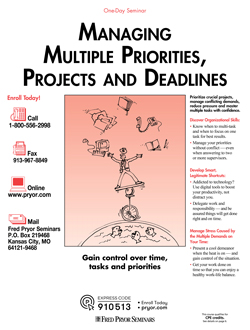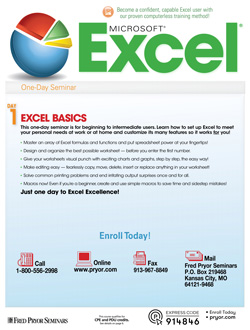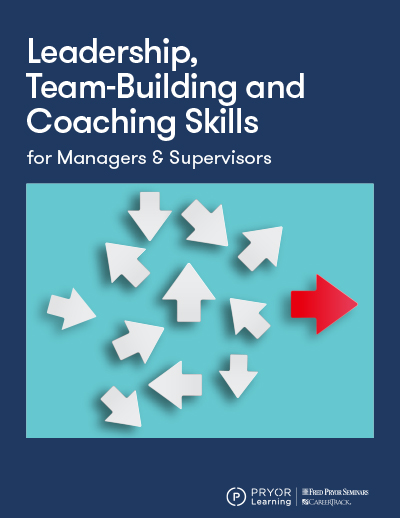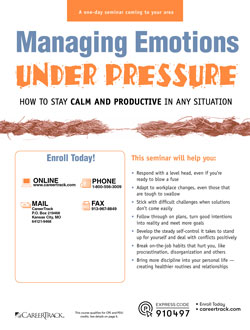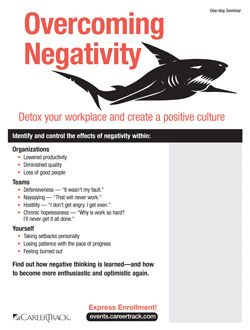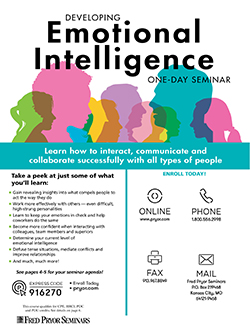Choosing Creativity: A Problem-Solving Exercise
- Author: Sheryl McAtee
- Categories:
- Tags:
- Share on:
Some people are naturally creative. New ideas and innovative approaches come with ease, and they thrive on generating new possibilities or troubleshooting ideas. Of course, creative ideas are just that – ideas – and leveraging that creativity for problem-solving can be challenging.
For others, creativity does not flow as easily, and professional training and structured activities are needed that provide a model. Creativity can be taught and developed, and even integrated into daily work processes.
Here is a step-by-step training technique for sparking creativity in small groups – while also resulting in an actionable plan that can be implemented. It will work in groups of 4-32 people, placing people in small groups of 4-6 people each.
- The first step is to identify a shared problem to be solved. This problem can be given to the group or developed during a separate problem identification exercise. It is important that everyone in the group understand what the problem is and how it affects the organization.
- Each small group is then instructed to come up with the most creative – even outrageous – idea for solving the problem. Anything goes! The more “out of the box” the better! This takes about 15 minutes, and you can expect a lot of laughter.
- Have each group then write down and report their solution to the larger group – with NO judgements or objections allowed. After all the ideas are shared, have the room choose the most creative idea. The goal is to reward creativity – and to show it is safe to share even silly ideas as a starting point forward.
- Next, each group takes the creative idea and finds a realistic solution it inspires – the assumption is that every “over the top” idea can open people’s minds to something less outrageous, but still new and different. Each small group reports to the full group their more realistic version of the solution.
- Finally, each group is instructed to take one of those ideas and come up with three next steps that would be needed to move forward to implementing it. In this process, the proposal may be slightly adjusted to make it even more actionable.
- The outcome of this exercise is generally a collection of “three next steps” and close-to-practical solutions to a shared problem. For many groups, this can be a very empowering experience that demonstrates the link between creativity and practical planning – and that celebrates both.
Systematic approaches may seem antithetical to creativity, but this kind of structured exercise can spark new ideas, and set a standard that creative – even “out there” – ideas are safe to be played with and rewarded.
Choose a Seminar and Save $10
Spark Innovation and Think Strategically
1 Day
- CEU: 0.6
- CPE: 6
Team Training - Virtual or In-person
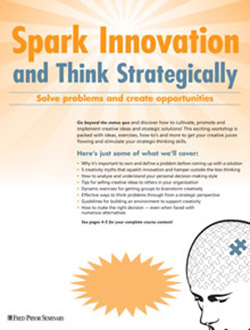
Speed Reading with Evelyn Wood Reading Dynamics®
1 Day
- CEU: 0.6
Team Training - Virtual or In-person

Time Management for the Overwhelmed
1 Day
- CEU: 0.6
- CPE: 6
Virtual Seminars:
-
Apr 16
-
Apr 22
-
Apr 28
-
+ 14 more dates
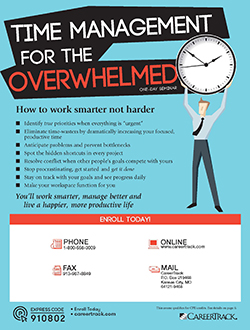
Dealing with Difficult People
1 Day
- CEU: 0.6
- CPE: 6
- HRCI: 5.5
- PDC: 6
- PDU: 6
Virtual Seminars:
-
Apr 16
-
Apr 22
-
Apr 24
-
+ 30 more dates
In-Person Events:
- Apr 23, Houston, TX
- Apr 24, Anaheim, CA
-
+ 2 more dates

Managing Multiple Priorities, Projects and Deadlines
1 Day
- CEU: 0.6
- CPE: 6
Virtual Seminars:
-
Apr 16
-
Apr 17
-
Apr 23
-
+ 30 more dates
